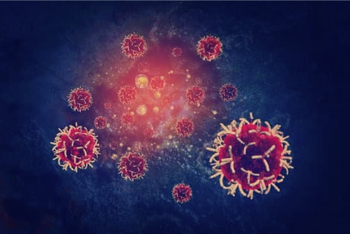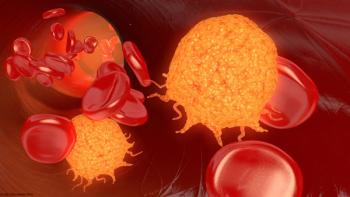
CancerNetwork® Recaps Tarantino’s Twitter Takeover at SABCS 2021
Paolo Tarantino, MD, hosted a Twitter Takeover during the San Antonio Breast Cancer Symposium where he discussed abstract presentations and key takeaways in a #CNRealTimeReport.
Every December, the
During the first day of the conference, CancerNetwork® held a Twitter takeover hosted by Paolo Tarantino, MD, a clinical research fellow at Dana-Farber Cancer Institute in Boston. Tarantino posted about abstracts being presented in a #CNRealTimeReport, where he detailed the major takeaways and important messages from each of the presentations.
NeoTRIPaPDL1 Trial
Tarantino began the discussion with the first look at data from the
Data from the study, which examined nab-paclitaxel (Abraxane) plus cisplatin with or without atezolizumab (Tecentriq), revealed the possibility of response prediction with imaging-mass cytometry for patients with triple-negative breast cancer. IMC provided greater insight into the heterogeneity of TNBC that is not typically available with bulk protein or gene expression information only.
Higher expression of 2 cell phenotypes—PD-L1–positive, IDO-positive antigen-presenting cells (APCs) and CD56-positive neuroendocrine (NE) epithelial cell—were associated with higher pathologic complete response rates with atezolizumab. In those with PD-L1–positive, IDO-positive APCs who received atezolizumab, pCRs were 64.6% vs 24.6% for those with high and low expression, respectively (P <.001).
To investigate the association between biomarkers and pCR rates, a high-dimensional imaging of the tumor, tumor-stroma interface, and the adjacent stroma were used.
SAFIR02_BREAST and SAFIR-PI3K Trials
Next, Tarantino look to
Patients treated on the trials received 6 to 8 lines of induction chemotherapy, and the 238 of 1462 without progression who had actionable genomic alteration were randomized to matched targeted therapy (n = 157) or maintenance chemotherapy (n = 81).
Investigators found that a significant PFS difference was not found in the overall population between targeted therapy and chemotherapy (adjusted HR, 0.77; 95% CI, 0.56-1.06; P = .109). However, other markers, like homologous recombination deficiency on those with BRCA mutations who received olaparib (Lynparza), was associated with prolonged PFS (HR, 0.32; 95% CI, 0.12-0.83; P = .013).
“Important message: genomic profile is only useful when alterations are interpreted according to a validated framework of actionability,” Tarantino wrote.
TROPION-PanTumor01Trial
Next, Ian E. Krop, MD, PhD, presented on a group of patients with advanced or metastatic triple-negative breast cancer (mTNBC) who were treated with datopotamab deruxtecan (Dato-DXd) and saw high response rates in the phase 1
“Highly promising response rate of 34% for Dato-DXd in mTNBC, including response in patients receiving prior sacituzumab,” Taratino wrote.
At median follow-up of 8.8 months, the ORR was 52% in patients in patients with TNBC who did not receive treatment with a Topo I inhibitor–based antibody-drug conjugate.
This treatment showed no new safety signals, with the most frequent treatment-emergent adverse effects (TEAE) being nausea, stomatitis, vomiting, and fatigue. A total of 98% of patients experienced at least 1 TEAE, of which 45% were grade 3 or higher.
A phase 3 study is currently underway investigating this treatment in hormone receptor–positive, HER2-negative breast cancer and another phase 3 trial in TNBC is planned.
KEYNOTE-355 Trial
Finally, findings from the
When combining pembrolizumab plus chemotherapy, a median overall survival of 23.0 months was found compared with 16.1 months with chemotherapy alone in those with PD-L1 CPS of 10 or higher (HR, 0.73; 95% CI, 0.55-0.95; P = .0093). Additionally, the 18-month OS rates were 58.3% with pembrolizumab and 44.7% with chemotherapy.
The median PFS was 9.7 months in the pembrolizumab group vs 5.6 months with chemotherapy alone in those with a PD-L1 CPS of 10 or higher (HR, 0.66; 95% CI, 0.50-0.88). The 12-month PFS rate in the pembrolizumab group was 39.1% and 23.0% in the chemotherapy.
However, not all patients demonstrated a PFS benefit from the addition of pembrolizumab, such as those in the PD-L1 CPS less than 1 (HR, 1.09; 95% CI, 0.78-1.52) and 1 to 9 groups (HR, 0.85; 95% CI, 0.65-1.11).
“The [standard-of-care] threshold for use of pembro in mTNBC remains PDL1 CPS ≥10,” Tarataino concluded.
To view the full Twitter takeover,
Newsletter
Stay up to date on recent advances in the multidisciplinary approach to cancer.



















































































